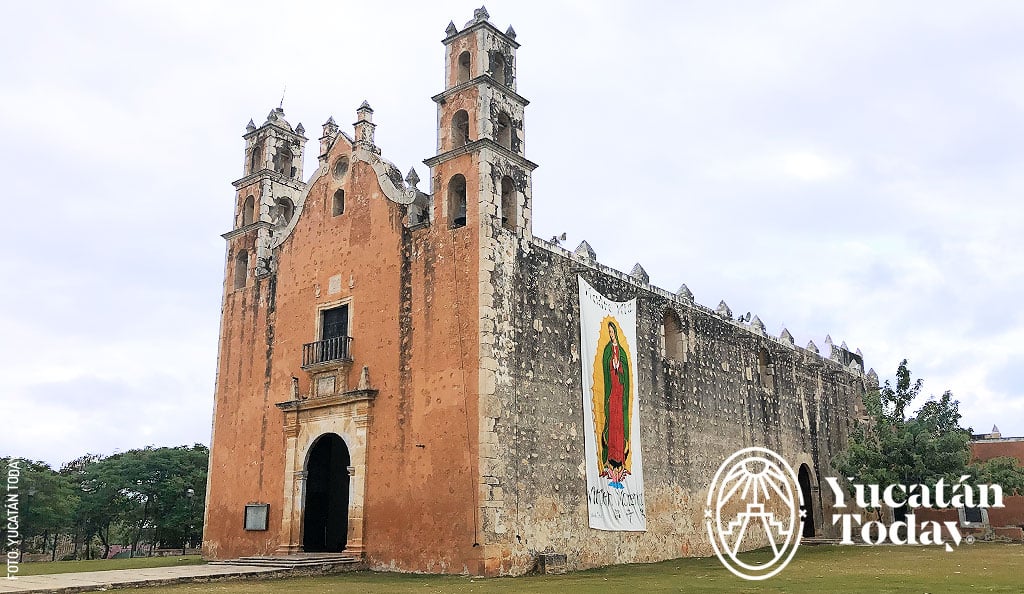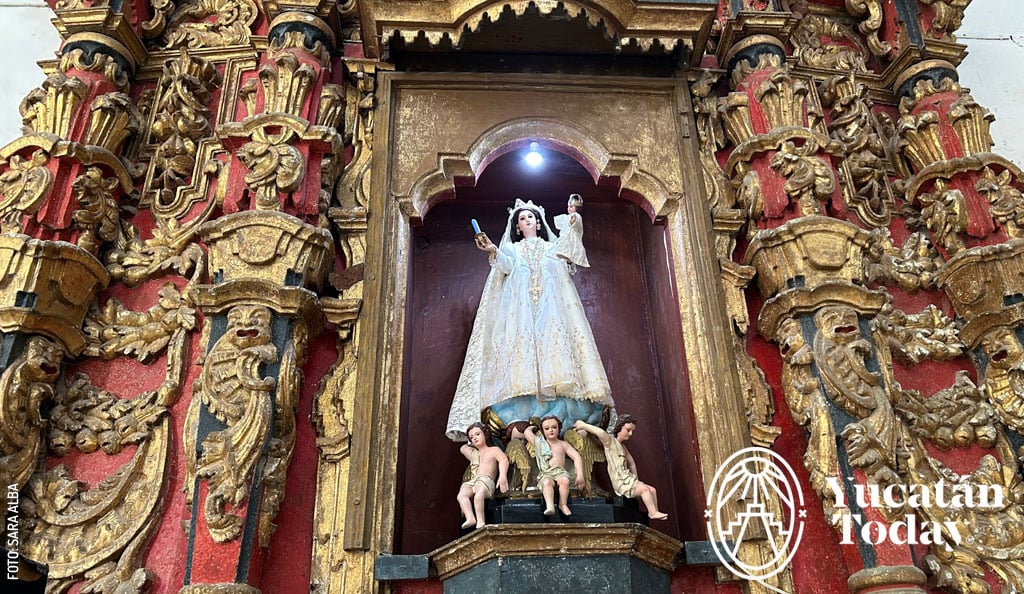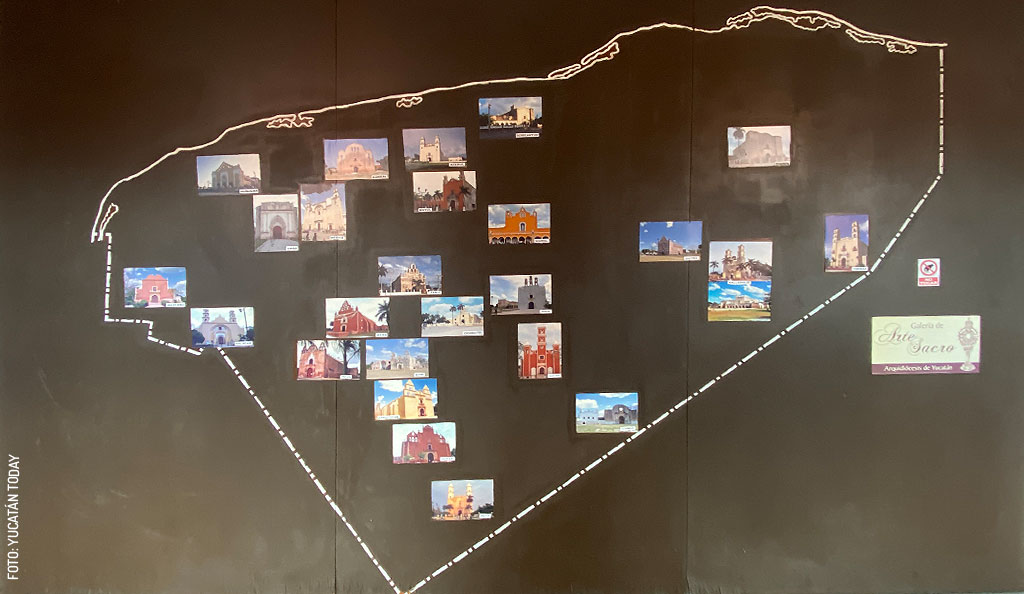
Convents of Yucatán: History, Faith, and Colonial Architecture
The Colonial Convents of Yucatán: Spiritual Fortresses and Historical Treasures
Grand—not just big, but massive, and full of mystery and history: the colonial convents of Yucatán are a well-known secret that few actually visit. Most began construction in the 16th century, led by the Franciscan Order, which arrived in the Península between 1544 and 1547. Their purpose was multifaceted: to establish Christian authority among the Maya and to create strategic centers of development and control. How important were they? In the words of Mexican historian Guillermo Tovar y de Teresa, the convents of that era were “spiritual fortresses,” spaces for religious outreach where trades were taught and the local population was evangelized.
But first—what is a convent? A convent or monastery is a space that houses members of a religious order who study and follow the principles of their faith, dedicating their lives to its teachings. In New Spain, the orders present were the Franciscans, Dominicans, and Augustinians. In Yucatán, the Franciscans stood out in particular—not only managing the administrative duties of their order but also learning and studying the Maya language, teaching catechism and Spanish, and even instructing local inhabitants in arts and trades.
To encourage the arrival of people and better integrate them into the community, convents were built near the center of towns, and followed a European architectural model. However, the physical and social geography of the Península required adaptations that make Yucatán’s convents unique. One of these local innovations was the open chapel or capilla de indios, an outdoor space designed to hold large masses and facilitate the mass conversion of the Maya population to Catholicism.
Another distinctive regional feature is that, unlike other parts of México, the early Yucatecan convents decorated the walls of their cloisters and temples with murals. This was due to the local scarcity of wood, which made the construction of altarpieces costly and prompted a different artistic solution.
Architectural layout of the convents of Yucatán
The main activities of a convent took place in the cloister, a covered walkway that surrounded a central courtyard. On the ground floor of this cloister, one would find storerooms, meeting halls, the kitchen, and the refectory (communal dining room). On the second floor (if present), the monks’ bedrooms or cells were located. A side door would connect the cloister directly to the church—either to the main nave or the choir loft—for religious services.
To meet basic needs, most convents also included an orchard at the back of the property. Water, essential for both irrigation and human consumption, was drawn from a well or a cenote using a traditional pulley system.
The first convents in Yucatán began construction in 1546 and spread quickly over the following centuries. At their peak, there were an estimated 30 monasteries across the region. After the Reform Laws of the 19th century, many were abandoned or fell into ruin, although most convent structures still stand today. While none currently operate as convents in the traditional sense, some have been repurposed as museums or schools, and their attached churches still offer religious services.
Below, we introduce you to some of the most significant convents you can visit in Yucatán today.
Convent of Saint Anthony of Padua, Izamal
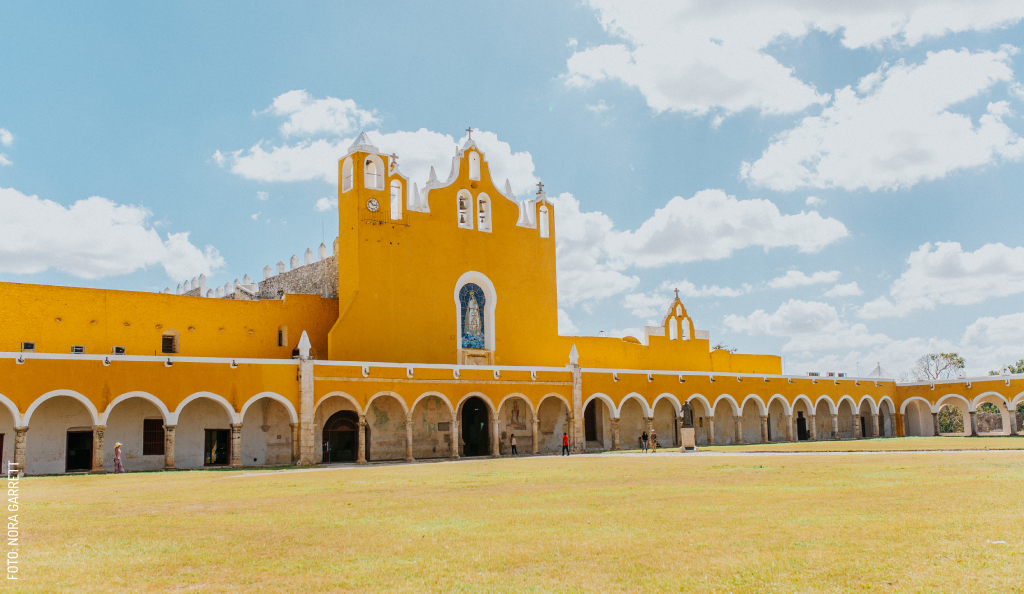
Legend has it that Friar Diego de Landa chose the ruins of Pap-Hol-Chac, one of the main structures of the abandoned Maya city of Itzmal, as the site to build this convent, because, it is said, the sea could be seen from its summit. What is certain is that anyone who visits the former Convent of Saint Anthony of Padua never forgets it. Its impressive size and architectural harmony attract eyes and camera lenses from around the world. Built between 1549 and 1561 using plans by Friar Juan de Mérida, the convent stands at the heart of social and economic life in the Magical Town of Itzmal.
Its atrium, the largest in the Americas and the second-largest in the world, preserves in its corners four of the only six capillas posas remaining in Yucatán, joined by roofed walkways where hundreds of swallows have made their nests.
What is a capilla posa?
Capillas posas were small, roofed spaces located at the corners of convent atriums. They served as resting or stopping places (“posa” meaning “rest” or “pause”) for religious processions, either with the Blessed Sacrament or the coffin of a deceased person. These are typical and distinctive architectural features of religious buildings from the colonial era in New Spain.
In total, the convent’s atrium boasts 75 arches and a surface area of 8,000 square meters. Elevated atop a pre-Hispanic platform, it serves as an exceptional viewpoint overlooking all of Izamal. The cloister, sober and solemn in design, has two levels, though only the ground floor is open to visitors. But perhaps the most remarkable part lies at the back, where a small museum tells the story of the Franciscan Order, commemorates Pope John Paul II’s visit in 1993, and displays the elaborately decorated garments of the Virgin of the Immaculate Conception, Our Lady of Izamal, whose feast day is celebrated on December 8. Just above the museum is a room of great historical and religious significance: the Virgin’s Dressing Room, considered the oldest of its kind on the continent.
Saint Anthony of Padua no longer functions as a convent, but Izamal still has an active Franciscan monastery. If you peek into the church during a religious service, you might be lucky enough to witness Franciscan monks leading prayers and hymns, dressed in their traditional brown robes and rope belts.
Saint Anthony of Padua Convent, Izamal
Calle 30, entre 33 y 31, Centro
Sanctuary Museum of Our Lady of Izamal
Tue. - Sun. 9 am - 5 pm
Admission fee: $5 pesos
Convent hours:
Every day, 6 am - 7:30 pm
Convent of Saint Bernardino of Siena, Valladolid
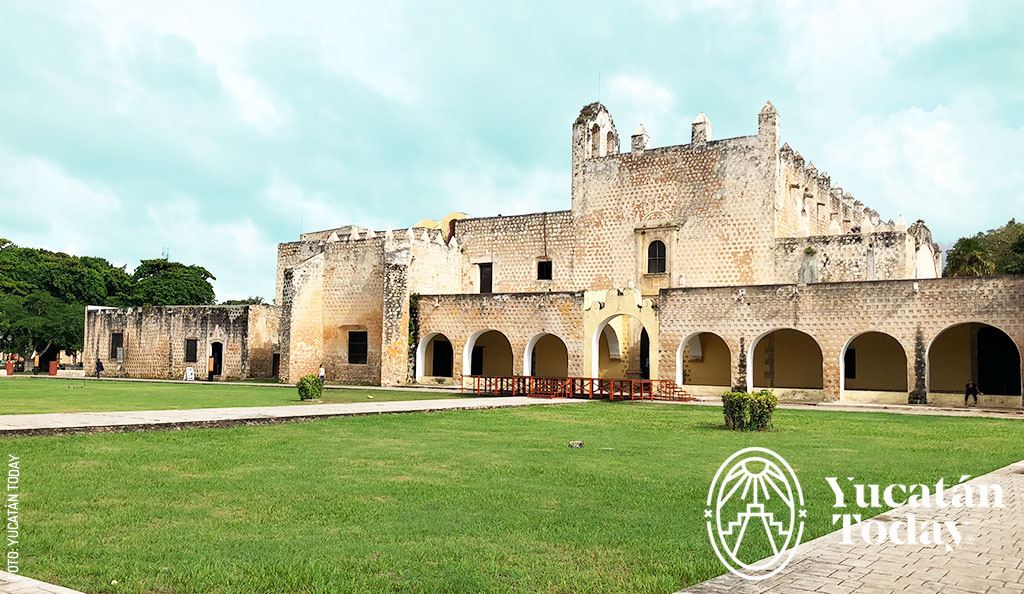
Restored in 1978, the former Convent of San Bernardino de Siena in Valladolid is, after the one in Itzmal, the second largest convent in Yucatán. Its imposing and rigid appearance, with battlements atop the walls that give it the air of a fortress, hides treasures worth discovering. Built around 1552 under the guidance of Friars Francisco de la Torre, Hernando de Guevara, and Juan de Mérida, the lower cloister now houses a museum. This museum displays Maya and colonial ceramics, as well as old English rifles used during the Caste War, recovered from the adjacent cenote. On the upper floor, visitors can explore some of the monks’ cells and wander through shadowy corridors that evoke another era.
Curious detail: In the lower cloister hallway, next to the church, you’ll notice two small doors: they are entrances to built-in confessionals, which allowed the priest to remain in the cloister while the confessor stayed inside the temple. In the garden, the well over the Sis-Há cenote still stands, which once supplied the convent with water. But monks haven’t been the only “guests” here—legendary figures like Laurence Graff, “Lorencillo,” the infamous Dutch pirate who terrorized the region in the 17th century, was also imprisoned here for a few days.
Cedar altarpieces finished in red and gold (look for the carving of a donkey kneeling), along with 18th-century paintings and sculptures from different periods, adorn the church. At night, a video mapping show projected on the façade brings the history of the monastery and the city to life.
Convent of Saint Bernardino of Siena, Valladolid
Calle 50 #210-B, Barrio de Sisal
Convent museum:
Tue. - Fri. and Sun., 9 am - 5 pm
Sat. 9 am - 4 pm
Admission fee: $40 pesos
Convent of Saint Francis of Assisi, Conkal
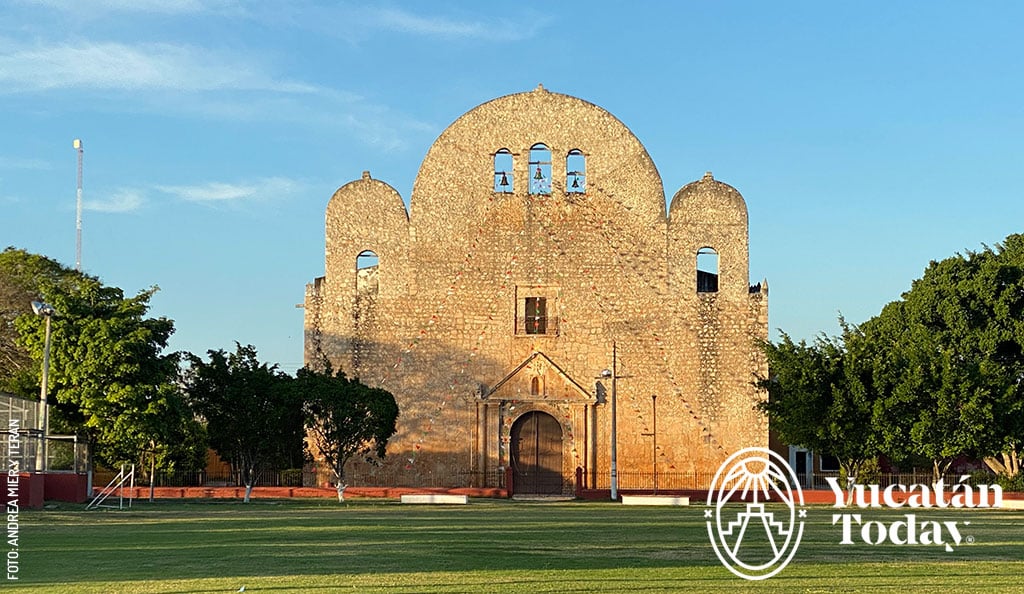
Franciscan to its very core, this former convent stands out from the start with its church façade: broad and austere, with a rounded pediment that gives it a unique appearance. On the south side, facing the street, Moorish-inspired arches invite photos, while pyramid-shaped battlements line the roof, adding a distinctive touch. But its interior holds more secrets—among them, the presence of two cloisters connected by a hallway.
Built at different times, the older cloister is a single story and is said to be the place where part of the “Historia de Yucatán”, the seminal work by Friar Diego López de Cogolludo (published in Madrid in 1688), was written. The second cloister has two levels and, since 2016, houses the Sacred Art Gallery in its upper cells and corridors, showcasing paintings, carvings, and documents from all over Yucatán. It’s also home to the Historical Archive of the Archdiocese of Yucatán.
Its vibrant present contrasts with its turbulent past. It was the third monastery founded in Yucatán (the fourth in the Península) and, like many other buildings of the era, it was constructed atop the remains of a former Maya temple and an early chapel. Founded in 1549, its construction took more than a hundred years and suffered a steep decline in the 19th century following the expulsion of religious orders, abandonment, and the sale of parts of its lands. It might have disappeared entirely if, at the start of the 20th century, the temple hadn’t been restored and part of the former convent adapted into a school. In 1924, it even briefly housed the offices of the Socialist Resistance League. The entire complex was restored in 2001.
Convent of Saint Francis of Assisi, Conkal
15 km north of Mérida
Calle 20 #14, entre 21 y 19
Sacred Art Gallery:
Tue. - Fri. 9 am - 1 pm
Sat. and Sun. 9 am - 5 pm
Admission fee: $30 pesos
Convent of Saint Michael the Archangel, Maní
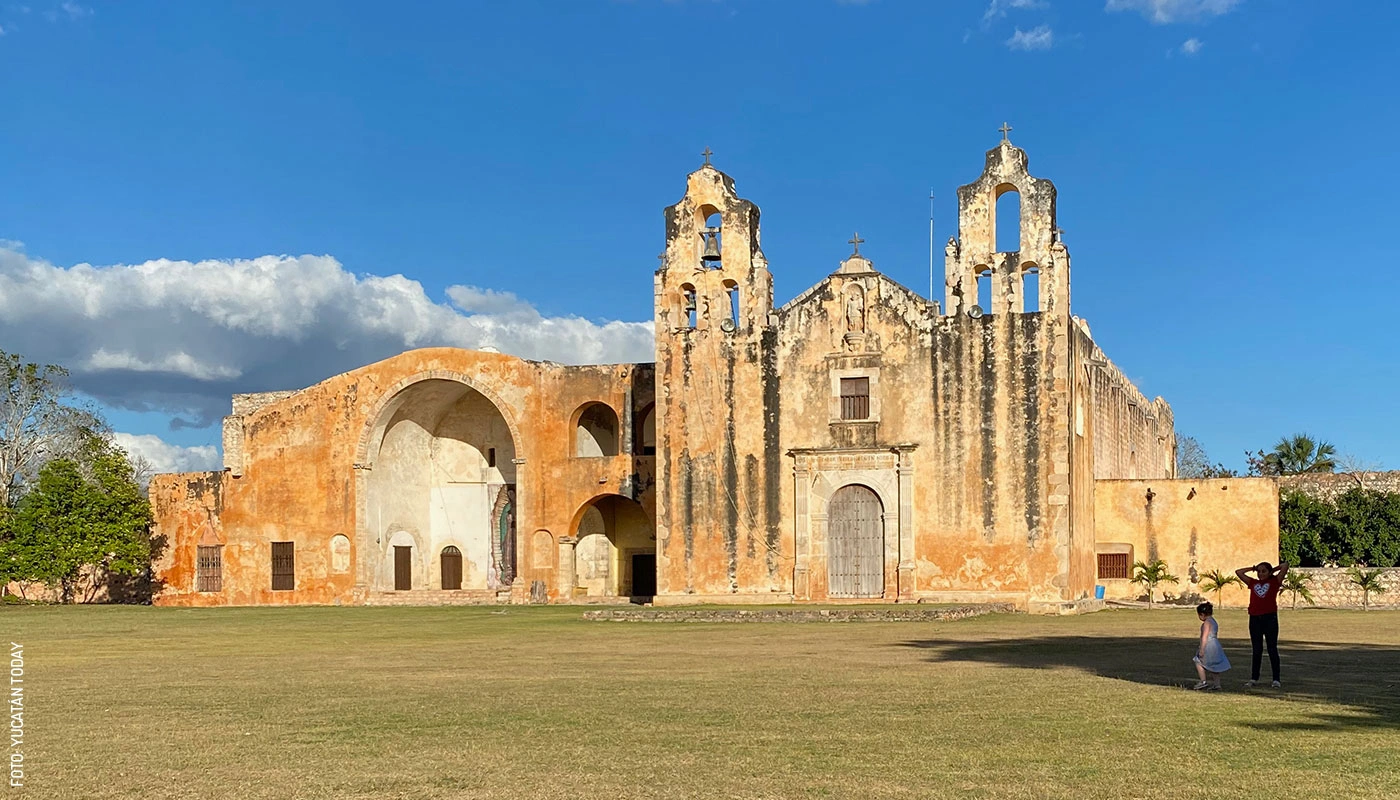
For better or worse, this site in Maní is sadly known for the infamous auto-da-fé that took place on July 12, 1562, when, in full view of the public and in the convent’s atrium, Friar Diego de Landa destroyed countless Maya sculptures and priceless codices in his attempt to combat what he deemed paganism. Later, realizing the magnitude of his mistake, he attempted to atone for his actions by writing the foundational “Relación de las cosas de Yucatán”. But that, as they say, is another story.
The complex was founded in 1549, and its construction was overseen by Friar Juan de Mérida, who organized and trained the local population so effectively that, according to tradition, the convent was completed in just seven months by a workforce of six thousand people—a record for the time. In reality, the entire project (convent, atrium, church, school, infirmary) took seven years to complete, since each part progressed at its own pace. The cloister is simple and currently not in use, but the most striking feature lies outside. At sunset, when the sun hits the façade, the whole complex dazzles the eye: a vast rectangular atrium with a corner capilla posa and a massive open-air chapel with remnants of mural painting, which once had a palm-thatch roof stretching 60 meters (197 ft) long by 25 meters (82 ft) wide.
Inside the church, the altarpieces of Saint Anthony of Padua and Saint Michael the Archangel stand out—they are considered among the finest of their kind in the country. It’s also worth noting the mural remnants on the walls behind the altarpieces. Take a close look at a special detail on the church’s façade: the sun and moon figures on the frontispiece.
Convent of Saint Michael the Archangel, Maní
Maní, 90 km (56 mi) southeast of Mérida.
Convent: Calle 28 x 23 y 25, Centro.
Free tours of the former convent are organized by the local government. Book via email:
direccionturismo2022@gmail.com
The former Route of the Convents
Before Yucatán became one of México’s top tourist destinations, one of the main attractions promoted to visitors was the so-called “Route of the Convents.” This itinerary included a series of towns—mostly between Mérida and Maní—known for their impressive churches and convents rich in architecture, history, and sacred art.
Though all the buildings still exist, the route is no longer actively promoted. As a result, many temples are only open during irregular hours, making it difficult to visit them all thoroughly in a single trip. However, if you’d like to take a look, there are still many details you can appreciate from the outside.
Stops along the now-defunct Route of the Convents
Acanceh: Former Convent and Church of Our Lady of the Nativity and the Chapel of the Virgin of Guadalupe
Although Acanceh’s main attraction is its ancient Maya ruins, the town’s churches date back to the 16th century. Read more about Acanceh.
Tecoh: Former Convent and Church of the Virgin of the Assumption
Completed in 1751, this church was built atop a pre-Hispanic platform, a clue to the site’s ancient past. Inside, it houses a Baroque altarpiece along with several works by the renowned colonial artist Miguel Cabrera.
Telchaquillo: Our Lady of the Immaculate Conception
Simple in appearance, the small church in Telchaquillo hides a secret in plain sight: its corners are adorned with carved Maya stones.
Tekit: Former Convent and Parish of Saint Anthony of Padua
Guayaberas aren’t the only reason to visit Tekit: its church and former convent are well worth a stop. In addition to its 1591 baptismal font, the church features a striking red and gold altarpiece.
Mama: Former Convent and Parish of the Assumption
Believed to be the oldest church on the route, this Franciscan temple and former convent boasts a beautiful bell tower and a walled atrium that is one of the most photographed in the region. In the back, you’ll find a charming garden, a waterwheel well (noria), and saints placed in every niche.
Chumayel: Former Convent and Church of the Immaculate Conception
Built in the 16th century, this church is a clear example of the crenellated, medieval-style religious architecture brought to Yucatán by the early Spanish friars. Inside, the temple houses the Christ of the Transfiguration, a figure considered miraculous and venerated by devotees from all corners of the state.
Teabo: Former Convent and Parish of Saints Peter and Paul
Inside this construction stands a unique altarpiece featuring a pair of caryatid columns, and an Indian Chapel (Capilla de Indios) marked with the date 1617.
Tipikal: Saint Mary Magdalene
Its modest exterior conceals a magnificent interior, including three Baroque altarpieces in tones of red and blue: the main one is dedicated to Saint Mary Magdalene, with others honoring Saint John the Baptist and Saint Michael the Archangel.
Map: Route of the Convents
https://www.google.com/maps/d/edit?mid=1TjERXKhFV6Shce3_a3VMxJKHUK6Ne8k&usp=sharing
First published in Yucatán Today print and digital magazine no. 453, in September 2025.
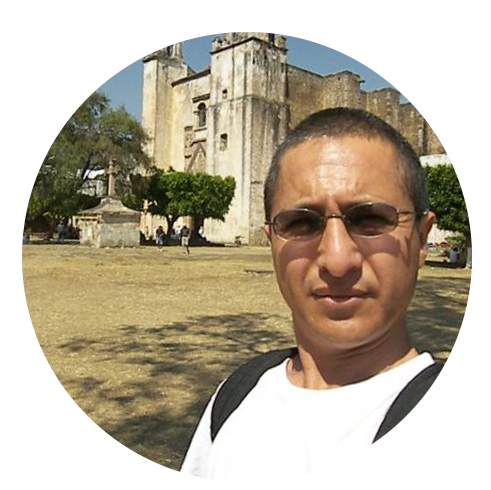
Author: Alberto Chuc
I like to travel through books and in the real world, activities that I combine whenever I can.
In love with Yucatán? Get the best of Yucatán Today in your email.
Don't miss our best articles and the monthly digital edition before anyone else.
Related articles
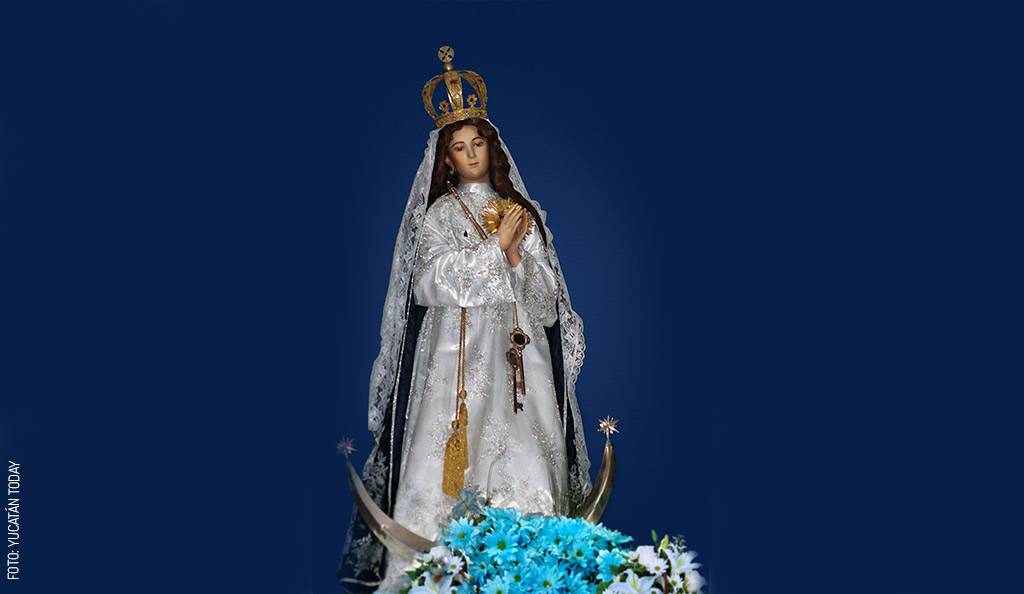
Our Lady of Izamal, the Virgin of the Immaculate Conception
We invite you to visit Our Lady of Izamal, the Virgin of the Immaculate Conception, in the charming Pueblo Mágico of Izamal, Yucatán.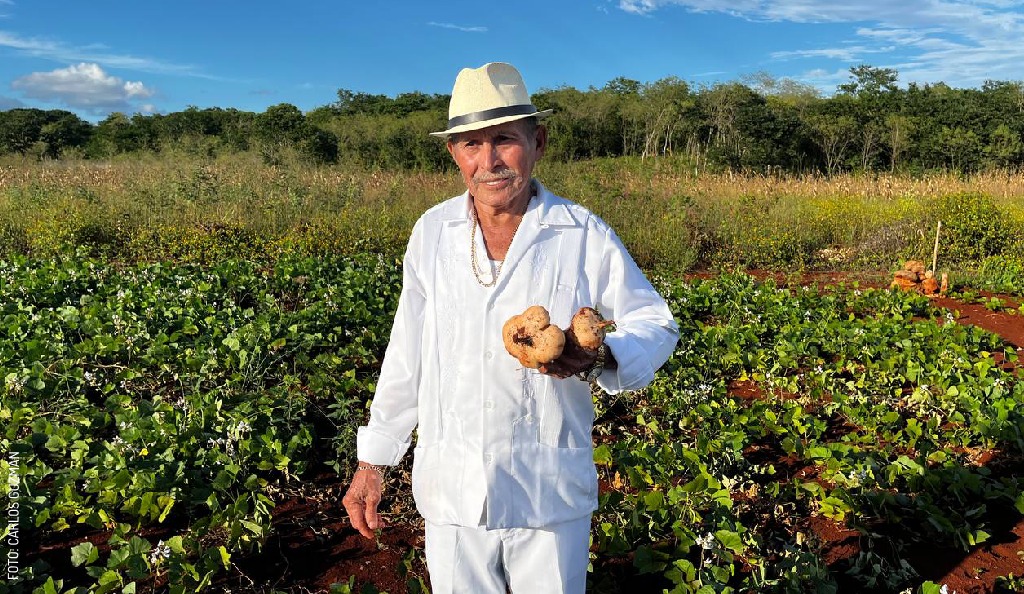
The Myth of the Maya Collapse and Disappearance
The Mayan civilization did not collapse; its people and language continue to live on in Yucatán, as an integral part of Mexican identity.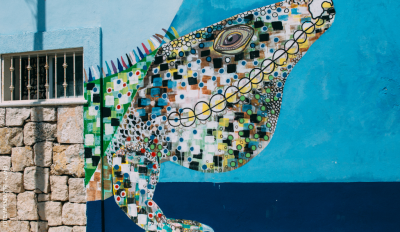



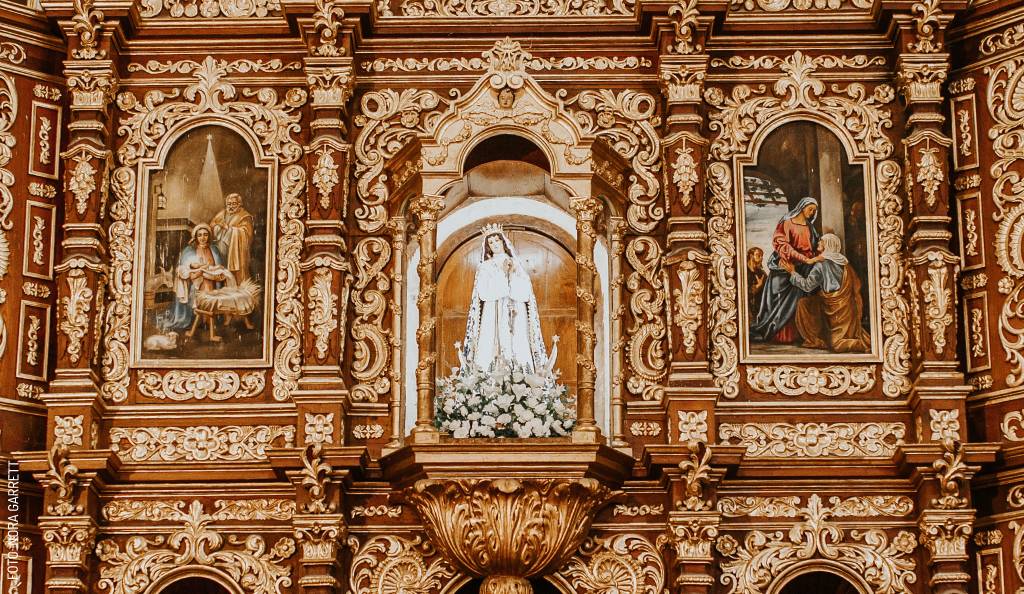

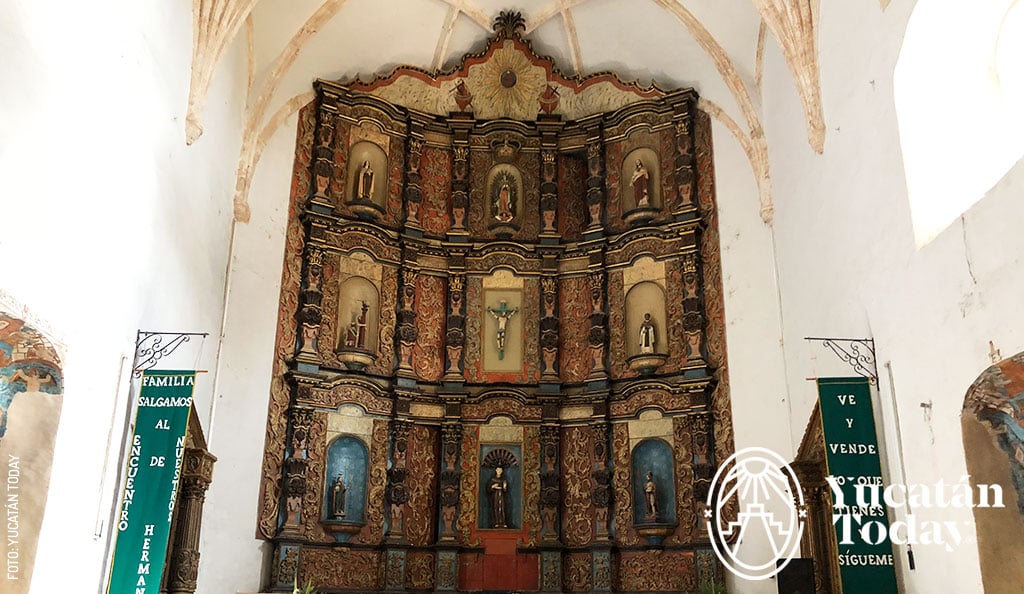
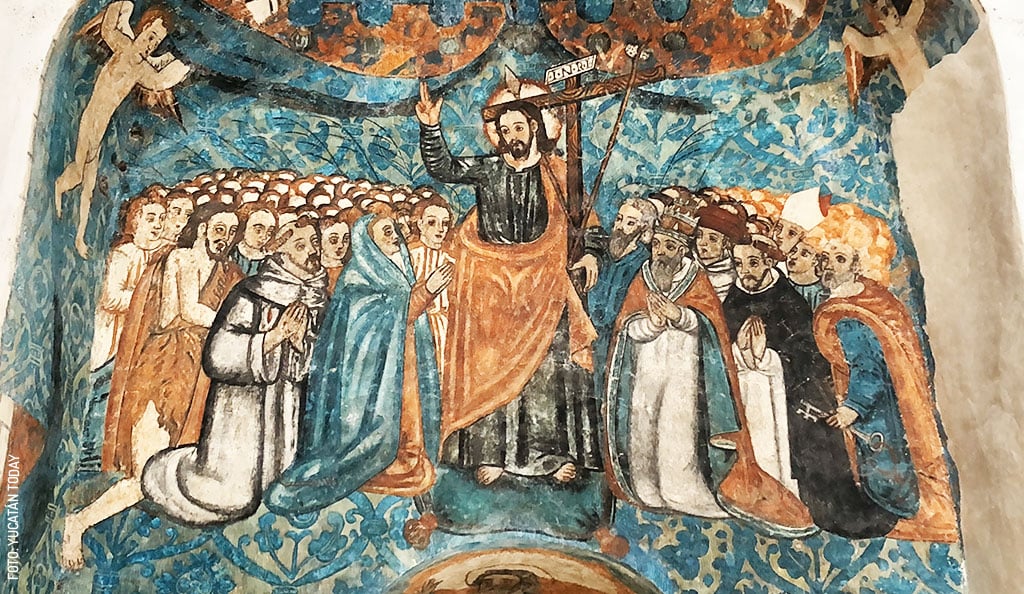


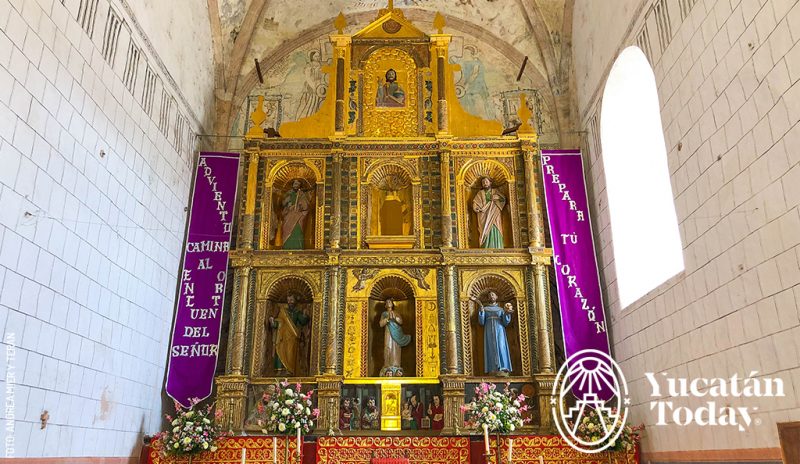
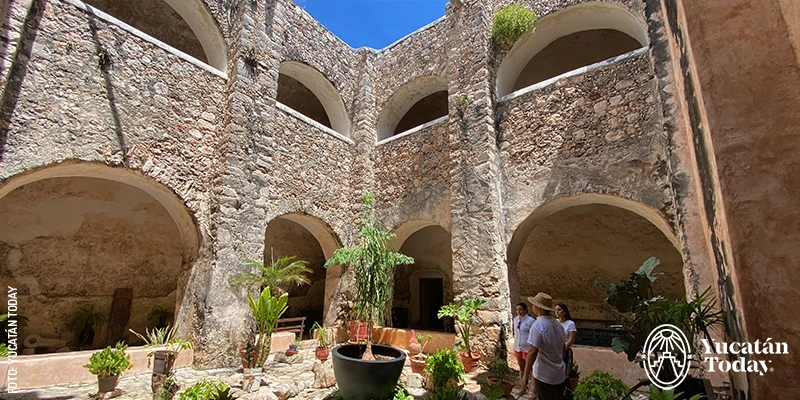
-1.webp)
